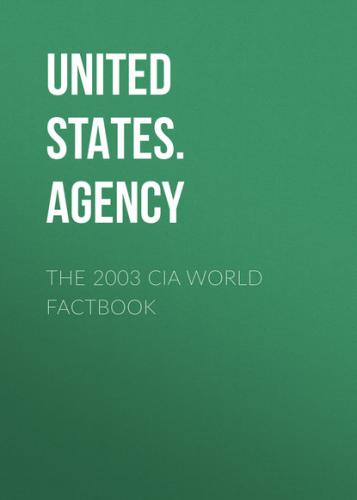17 years of age (2003 est.)
Military manpower - availability:
males age 15–49: 288,251,975 (2003 est.)
Military manpower - fit for military service:
males age 15–49: 169 million (2003 est.)
Military manpower - reaching military age annually:
males: 11,035,174 (2003 est.)
Military expenditures - dollar figure:
$11.52 billion (FY02)
Military expenditures - percent of GDP:
2.3% (FY02)
Transnational Issues India
Disputes - international:
much of the rugged, militarized boundary with China is in dispute,
but the two sides have participated in more than 13 rounds of joint
working group sessions on this issue; India objects to Pakistan
ceding lands to China in 1965 boundary agreement that India believes
are part of disputed Kashmir; with Pakistan, armed stand-off over
the status and sovereignty of Kashmir continues; disputes with
Pakistan over Indus River water sharing and the terminus of the Rann
of Kutch, which prevents maritime boundary delimitation; Joint
Border Committee with Nepal continues to work on resolution of
disputed boundary sections; dispute with Bangladesh over New
Moore/South Talpatty Island in the Bay of Bengal prevents maritime
boundary delimitation
Illicit drugs:
world's largest producer of licit opium for the pharmaceutical
trade, but an undetermined quantity of opium is diverted to illicit
international drug markets; transit point for illicit narcotics
produced in neighboring countries; illicit producer of methaqualone;
vulnerable to narcotics money laundering through the hawala system
This page was last updated on 18 December, 2003
======================================================================
@Indian Ocean
Introduction Indian Ocean
Background:
The Indian Ocean is the third largest of the world's five oceans
(after the Pacific Ocean and Atlantic Ocean, but larger than the
Southern Ocean and Arctic Ocean). Four critically important access
waterways are the Suez Canal (Egypt), Bab el Mandeb
(Djibouti-Yemen), Strait of Hormuz (Iran-Oman), and Strait of
Malacca (Indonesia-Malaysia).
Geography Indian Ocean
Location:
body of water between Africa, the Southern Ocean, Asia, and
Australia
Geographic coordinates:
20 00 S, 80 00 E
Map references:
Political Map of the World
Area:
total: 68.556 million sq km
note: includes Andaman Sea, Arabian Sea, Bay of Bengal, Flores Sea,
Great Australian Bight, Gulf of Aden, Gulf of Oman, Java Sea,
Mozambique Channel, Persian Gulf, Red Sea, Savu Sea, Strait of
Malacca, Timor Sea, and other tributary water bodies
Area - comparative:
about 5.5 times the size of the US
Coastline:
66,526 km
Climate:
northeast monsoon (December to April), southwest monsoon (June to
October); tropical cyclones occur during May/June and
October/November in the northern Indian Ocean and January/February
in the southern Indian Ocean
Terrain:
surface dominated by counterclockwise gyre (broad, circular system
of currents) in the southern Indian Ocean; unique reversal of
surface currents in the northern Indian Ocean; low atmospheric
pressure over southwest Asia from hot, rising, summer air results in
the southwest monsoon and southwest-to-northeast winds and currents,
while high pressure over northern Asia from cold, falling, winter
air results in the northeast monsoon and northeast-to-southwest
winds and currents; ocean floor is dominated by the Mid-Indian Ocean
Ridge and subdivided by the Southeast Indian Ocean Ridge, Southwest
Indian Ocean Ridge, and Ninetyeast Ridge
Elevation extremes:
lowest point: Java Trench −7,258 m
highest point: sea level 0 m
Natural resources:
oil and gas fields, fish, shrimp, sand and gravel aggregates,
placer deposits, polymetallic nodules
Natural hazards:
occasional icebergs pose navigational hazard in southern reaches
Environment - current issues:
endangered marine species include the dugong, seals, turtles, and
whales; oil pollution in the Arabian Sea, Persian Gulf, and Red Sea
Geography - note:
major chokepoints include Bab el Mandeb, Strait of Hormuz, Strait
of Malacca, southern access to the Suez Canal, and the Lombok Strait
Economy Indian Ocean
Economy - overview:
The Indian Ocean provides major sea routes connecting the Middle
East, Africa, and East Asia with Europe and the Americas. It carries
a particularly heavy traffic of petroleum and petroleum products
from the oilfields of the Persian Gulf and Indonesia. Its fish are
of great and growing importance to the bordering countries for
domestic consumption and export. Fishing fleets from Russia, Japan,
South Korea, and Taiwan also exploit the Indian Ocean, mainly for
shrimp and tuna. Large reserves of hydrocarbons are being tapped in
the offshore areas of Saudi Arabia, Iran, India, and western
Australia. An estimated 40% of the world's offshore oil production
comes from the Indian Ocean. Beach sands rich in heavy minerals and
offshore placer deposits are actively exploited by bordering
countries, particularly India, South Africa, Indonesia, Sri Lanka,
and Thailand.
Transportation Indian Ocean
Ports and harbors:
Chennai (Madras; India), Colombo (Sri Lanka), Durban (South
